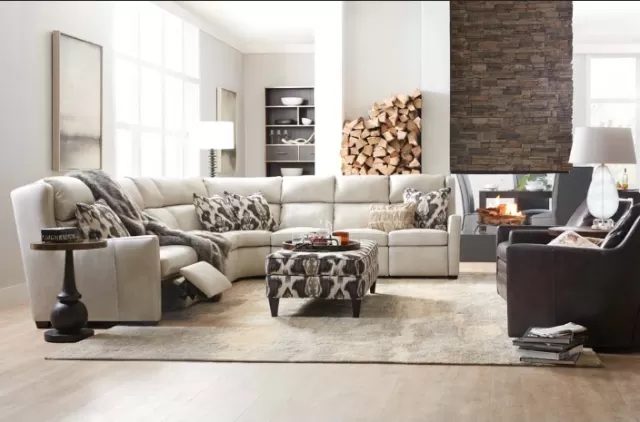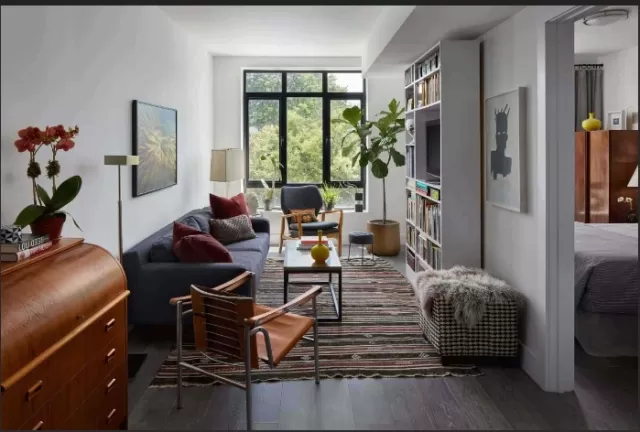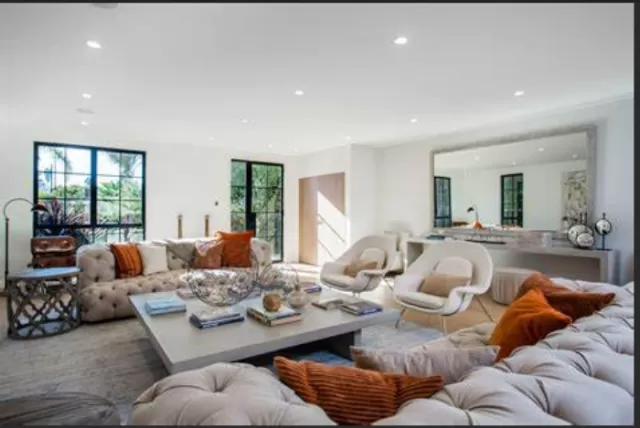Designers’ Tips on Décor Mistakes to Avoid. When it comes to decorating small spaces, finding the right balance between functionality and style is essential. Design decisions that work in larger rooms may not be suitable for smaller areas, making it crucial to consider various factors such as furniture size and placement, lighting, mirrors, storage solutions, and paint colors. To help you navigate the challenges of small-space design, eight experts share their best tips:
Furniture Size and Placement: Consider the size of your furniture and its placement within the room. Opt for pieces that fit well in the space without overwhelming it.
Lighting: Use a combination of sconces, ceiling lights, and natural light to brighten up the room. Well-placed lighting can open up small spaces and create a more inviting atmosphere.
Mirrors: Integrate mirrors to create the illusion of more space. Mirrors reflect light and make rooms appear larger and more open.
Vertical Storage: Maximize vertical space with storage solutions. Shelves and cabinets that extend upward provide additional storage without taking up valuable floor space.
Textured Wallpaper: Experiment with textured wallpaper to add depth and interest to the walls. Textures can enhance the visual appeal of a small space without overwhelming it.
Color Choices: Be strategic with paint colors. Lighter colors can make a room feel more spacious, while darker hues can add warmth and coziness. Consider the overall mood you want to achieve.
Multipurpose Furniture: Invest in multipurpose furniture to maximize functionality. Pieces that serve multiple functions, such as a storage ottoman or a sofa bed, can be especially valuable in small spaces.
Thoughtful Editing: Practice thoughtful editing when it comes to decor. Avoid overcrowding the space with unnecessary items, and prioritize pieces that contribute to the overall aesthetic.
By incorporating these Expert Tips, you can transform small spaces into functional and stylish environments that make the most of every square foot. Finding the right balance between design elements ensures that your home’s tiniest footprints feel inviting and well-curated.
Striking the Right Balance: Choosing Appropriate Furniture Sizes for Your Space

Selecting furniture that complements the dimensions of your space is key to creating a harmonious and functional room, according to design experts.
Kevin Kaminski of Kaminski + Pew highlights the importance of understanding both the dimensions of the room and the furniture intended for that space to avoid a mismatch that can lead to rooms feeling out of scale.
Many modern furniture pieces are designed with larger spaces in mind, and misjudging the size can impact the overall balance and ambiance of the room.
Beyond aesthetics, it can also affect the practicality of the space, leading to issues like furniture blocking doorways or cramped arrangements.
To prevent these challenges, interior designer Gabrielle Santiago emphasizes the significance of using a tape measure to determine the future footprint of the furniture before making a purchase.
This proactive approach allows homeowners to visualize how the furniture will fit within the space, helping avoid the pitfalls of oversized or ill-fitting pieces that may make a room feel smaller than it is.
In essence, measuring for success becomes a crucial step in creating a well-proportioned and inviting living environment, ensuring that the furniture not only enhances the aesthetics of the space but also contributes to its functionality.
Avoiding the Pitfalls of Modest Furniture: Finding the Right Scale for Your Space
In the quest for creating a cozy and well-furnished space, it’s essential to strike the right balance in terms of furniture scale.
Designer Michelle Zacks points out a common mistake—opting for furniture that is too modest for the space. While the intention may be to avoid overcrowding, the result can be a room that feels cold and uncomfortable.
Zacks suggests that choosing slightly larger furniture, such as a sofa, can have a positive impact.
Contrary to concerns about crowding, a slightly larger sofa can give the illusion of a more spacious environment. Additionally, it provides extra seating, enhancing the functionality of the space.
Understanding the scale of your room and selecting appropriately sized furniture contributes not only to aesthetics but also to the overall comfort and usability of the space.
It’s a delicate balance that involves avoiding both oversized and too-modest pieces, ensuring that the furniture complements the proportions of the room for an inviting and harmonious atmosphere.
Optimizing Space: Considerations for Furniture Placement

Effective furniture placement is a crucial aspect of designing a small room, and it goes beyond simply filling the available space.
Designers emphasize the concept of circulation, which refers to the pathways people use to move through a room. To maximize the sense of space and ease of movement, certain guidelines should be considered.
Amy Mobley of City Hill Design recommends leaving 18 inches between a chair or sofa and a coffee table, while maintaining at least 3 feet for walk spaces between furniture pieces.
This not only enhances the flow within the room but also contributes to a feeling of spaciousness.
Contrary to the common misconception that pushing furniture against walls makes a small space feel larger, Jessica Lynn Williams, owner and principal designer of Hendley and Co.
, highlights the benefits of floating furniture. Creating a dynamic flow by placing furniture away from walls can make the room feel more expansive and visually interesting.
In essence, thoughtful furniture placement takes into account both the functional aspects of circulation and the visual impact on the perceived size of the space.
By avoiding the pitfalls of overcrowding and wall-hugging arrangements, homeowners can unlock the full potential of their small rooms, making them more comfortable, functional, and visually appealing.
Optimizing Small Spaces: Avoiding Clunky and Heavy Furniture
In the quest to make the most of small spaces, interior designers caution against introducing clunky, heavy furniture pieces that can detract from the room’s negative space and make it feel smaller.
Gabrielle Santiago suggests steering clear of dark wood tones and oversized furniture frames.
Instead, consider more streamlined alternatives.
Santiago recommends swapping out bulky nightstands for nesting tables, a solution that offers functionality without overwhelming the space. This approach allows for a lighter visual impact and maintains a sense of openness.
For those transforming small spaces into home offices, Santiago proposes the use of translucent furniture to create the illusion of a larger room.
A glass desk, in particular, is highlighted for its ability to blend seamlessly with the surroundings. Its transparency prevents the space from feeling cramped and allows energy to flow freely.
In summary, choosing furniture with a lighter visual footprint and opting for streamlined, translucent pieces can be transformative in small spaces.
These choices contribute to a more open and airy feel, making the most of the available room and creating an environment that feels both comfortable and spacious.
The Art of Small Space Living: Emphasizing Organization and Editing

In small spaces, maintaining order and thoughtfully editing the room’s contents are essential principles, according to designer Amy Peltier.
While the importance of organization applies to rooms of all sizes, it becomes particularly crucial in a small footprint.
Peltier stresses the significance of adhering to a simple rule in small spaces—keep it organized.
The impact of a well-organized space is profound, preventing the feeling of overcrowding and creating an environment that is both functional and aesthetically pleasing.
The process of editing becomes A Key aspect of optimizing small spaces.
Peltier advises against cramming too much stuff into the room without a sense of organization, emphasizing that small spaces can be truly amazing when thoughtfully curated.
For those looking to improve small kitchens, Peltier recommends avoiding single-use appliances, spare gadgets, and excess utensils.
Instead, focus on items that serve multiple purposes and include only those that are used regularly.
In essence, the art of small space living involves intentional organization and a mindful approach to editing belongings.
By adopting these principles, homeowners can transform their small spaces into functional, visually appealing, and enjoyable environments.
*The information is for reference only.